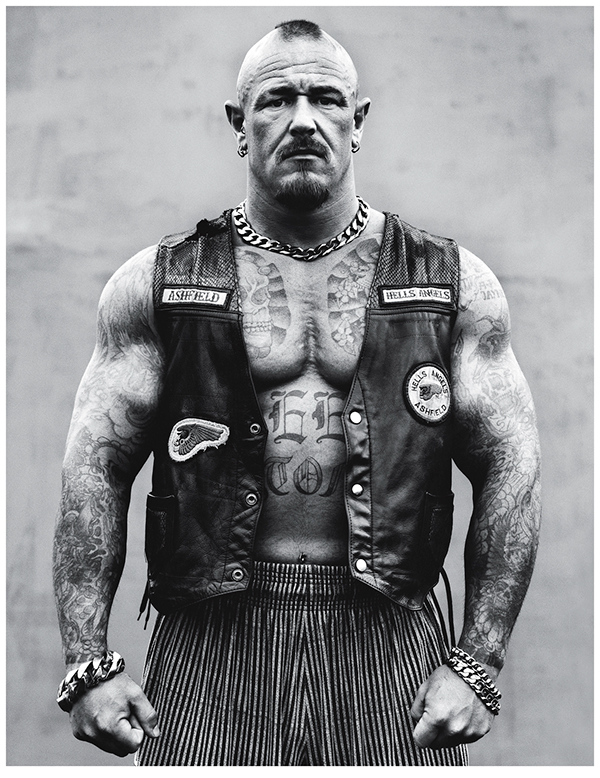A Critical Analysis Of The Hells Angels Motorcycle Club

Table of Contents
A History of the Hells Angels Motorcycle Club: From Post-War Origins to Global Organization
The Hells Angels Motorcycle Club's story begins in the post-World War II era of California. Emerging from a counterculture rejecting societal norms, the club's early members were primarily veterans seeking camaraderie and a sense of belonging. Their initial image was far removed from the notorious reputation they would later cultivate. Over time, however, the Hells Angels evolved, expanding their reach and becoming increasingly involved in organized crime. This evolution involved significant internal conflicts, power struggles, and territorial disputes, shaping their organizational structure and activities.
- Founding: The Hells Angels Motorcycle Club was founded in 1948 in Fontana, California.
- Key Early Figures: Early leadership figures played a crucial role in establishing the club's identity and trajectory.
- Territorial Expansion: The club's expansion across the United States and internationally marked significant milestones in its history.
- Structural Changes: The Hells Angels' organizational structure has undergone considerable evolution, adapting to changing circumstances and legal pressures.
The Structure and Organization of the Hells Angels MC: A Hierarchical Power Structure
The Hells Angels Motorcycle Club operates under a rigid hierarchical structure. This structure is crucial for maintaining control and facilitating their activities. At the bottom are prospects, aspiring members who must prove their loyalty and worth. Above them are full-patch members, who hold voting rights and participate in club decisions. The club's iconic "patches" are far more than mere emblems; they are symbols of membership and status within the organization, showcasing a complex system of symbolism. Decision-making processes often follow established protocols, reflecting a structured and well-defined power dynamic.
- The Mother Chapter: The original chapter often wields significant influence and authority over other chapters.
- Inter-Chapter Relations: Relationships between different chapters can be complex, marked by both cooperation and competition.
- Membership Initiation: Initiation rites are often secretive and demanding, reinforcing the club’s exclusive nature.
- Internal Discipline: The club enforces strict internal rules and disciplinary procedures, maintaining order and cohesion.
Criminal Activities and Involvement: Examining the Dark Side of the Hells Angels
The Hells Angels Motorcycle Club has a long and well-documented history of involvement in criminal activities. Drug trafficking, violence, extortion, and money laundering are just some of the offenses linked to the club. Their involvement in organized crime spans decades, with investigations revealing extensive criminal networks operating under the guise of a motorcycle club. Law enforcement agencies worldwide have engaged in numerous operations targeting the Hells Angels, leading to numerous arrests and convictions. Legal battles continue to shape the club’s landscape and impact its operations.
- Major Criminal Operations: Several high-profile cases have illustrated the scale and sophistication of the Hells Angels' criminal enterprises.
- Violence and Intimidation: The Hells Angels utilize violence and intimidation as tools to maintain control and enforce their interests.
- Law Enforcement Operations: Successful police raids and investigations have significantly disrupted the club's activities.
- Legal Impact: Legal actions have resulted in significant setbacks for the Hells Angels, impacting their operations and finances.
The Hells Angels Motorcycle Club and Counterculture: Image, Marketing, and Public Perception
The Hells Angels have cultivated a carefully constructed public image, leveraging their rebellious counterculture identity. Through strategic branding and marketing, including merchandise sales and carefully crafted media appearances, they have attempted to control their narrative, albeit with varying degrees of success. The media’s portrayal of the Hells Angels has been highly inconsistent, ranging from romanticized representations of rebellion to stark portrayals of criminality. This fluctuating image significantly impacts public perception, leading to both admiration and condemnation.
- Symbolism and Imagery: The club's use of specific symbols and imagery is carefully considered and contributes to their image.
- Marketing Strategies: Merchandise sales and strategic public relations efforts play a role in shaping their image.
- Media Portrayals: The media's depiction of the Hells Angels ranges from glamorous to deeply critical.
- Public Opinion: Public perception remains deeply divided, ranging from romanticized views to strong condemnation.
The Global Reach of the Hells Angels MC: International Chapters and Activities
The Hells Angels Motorcycle Club boasts a significant international presence, with chapters established in numerous countries across the globe. While maintaining a core identity, these chapters often adapt to local contexts, exhibiting variations in structure and activities. This global reach presents both challenges and opportunities for the club, navigating differing legal systems and law enforcement approaches. International collaborations and conflicts between chapters further underscore the complexities of the organization's global network.
- Global Presence: The Hells Angels operate in many countries, adapting to varying legal landscapes and cultures.
- Regional Variations: Activities and organizational structures can vary significantly depending on the geographic location.
- Legal Challenges: Navigating diverse legal systems poses significant challenges for the club’s international operations.
- International Dynamics: Interactions and potential conflicts between international chapters highlight the complexities of the global network.
Conclusion: Understanding the Complex Legacy of the Hells Angels Motorcycle Club
The Hells Angels Motorcycle Club presents a multifaceted and undeniably complex organization. This analysis has highlighted their history, hierarchical structure, criminal involvement, cultivated image, and global reach. Understanding the Hells Angels requires acknowledging both their extensive criminal activities and their enduring countercultural appeal. Their story is one of rebellion, violence, and a carefully constructed brand, making it a compelling subject for ongoing study and critical analysis. Further research into specific regional histories, legal battles, or the impact of specific leadership figures can contribute to a more complete understanding of this controversial and influential organization. Continue your exploration of the Hells Angels Motorcycle Club—delve deeper into their history, their criminal enterprises, or their influence on popular culture.

Featured Posts
-
 The Latest On Elon Musk And His Dogecoin Investments
May 25, 2025
The Latest On Elon Musk And His Dogecoin Investments
May 25, 2025 -
 Find Your Tranquility An Andalusian Farmstay Retreat
May 25, 2025
Find Your Tranquility An Andalusian Farmstay Retreat
May 25, 2025 -
 Kazni Za Mertsedes Vo Bakhrein Pred Pochetokot Na Trkata
May 25, 2025
Kazni Za Mertsedes Vo Bakhrein Pred Pochetokot Na Trkata
May 25, 2025 -
 Is A Canada Post Strike Driving Customers Away
May 25, 2025
Is A Canada Post Strike Driving Customers Away
May 25, 2025 -
 Finding Your Perfect Country Escape Homes Under 1m
May 25, 2025
Finding Your Perfect Country Escape Homes Under 1m
May 25, 2025
